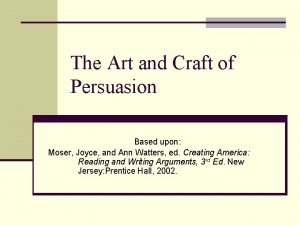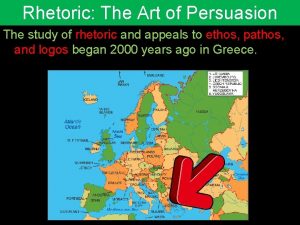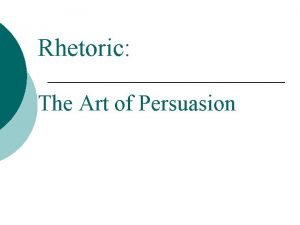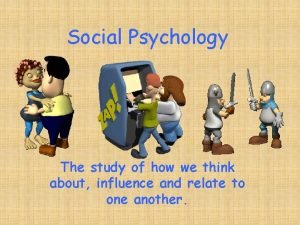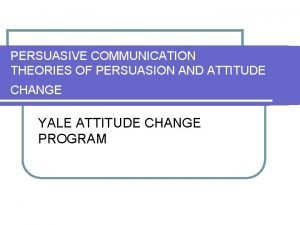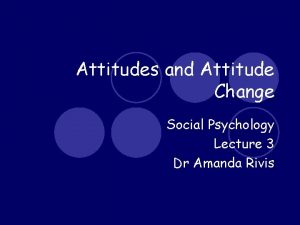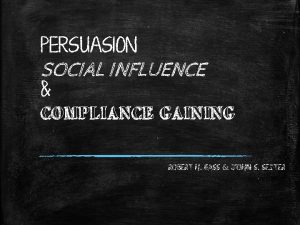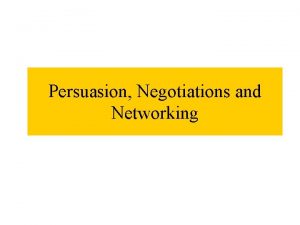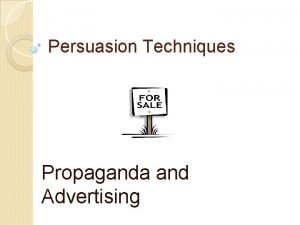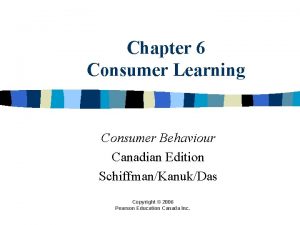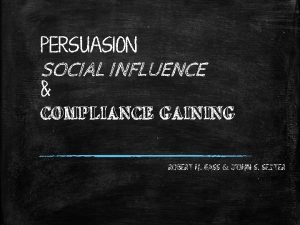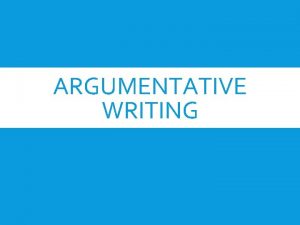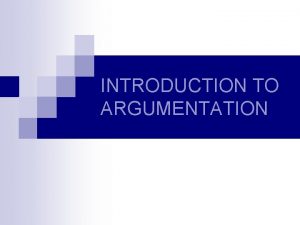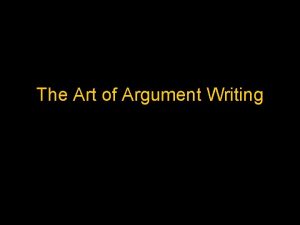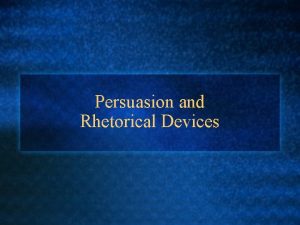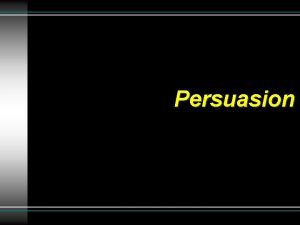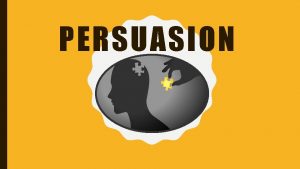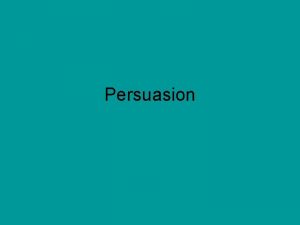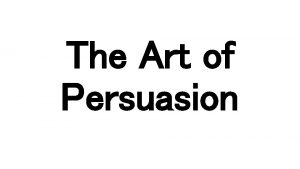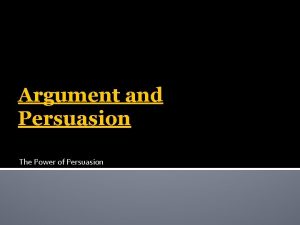Unit 2 The Art of Persuasion Argument and















- Slides: 15

Unit 2: The Art of Persuasion Argument and Persuasion Unit 2: Society’s Influence of the Individual; Art of Persuasion

Part 1: Author’s Purpose • • • An author’s purpose is what the writer hopes to achieve by crafting a particular work. Although there may be more than one purpose, usually one stands out. A writer’s purpose could be any of the following: • • To inform or explain To express thoughts or feelings To persuade To entertain

Uncovering Purpose • You can uncover the author’s purpose by looking at the choices the writer made. • • • Subject Tone Your reaction to the piece Diction/word choice Important details included in the piece

Purpose: Inform or Explain • If the author’s purpose is to inform or explain something to the reader, he/she will typically use the following elements to achieve their goals: • • • Facts and statistics Steps in a process Diagrams or illustrated explanations

Purpose: To Persuade • If the author’s purpose is to persuade the reader to think or feel something, he/she will typically use the following elements to achieve their goals: • • A statement of opinion Supporting evidence Appeals to emotions Call to action

Purpose: To Entertain • If the author’s purpose is to entertain the reader, he/she will typically use the following elements to achieve their goals: • • • Suspenseful or exciting situations Humorous or fascinating details Intriguing characters

Purpose: To Express Thoughts or Feelings • If the author’s purpose is to express thoughts or feelings to the reader, he/she will typically use the following elements to achieve their goals: • • • Thoughtful descriptions Insightful observations The writer’s personal feelings

Part 2: The Elements of an Argument • An argument expresses a point of view or position on an issue and supports the position with reasons and evidence. • Sound (strong) arguments appeal strictly to reason, not emotions. • Include these elements: • • Claim: the writer’s or speaker’s position on an issue Support: valid reasons and relevant and sufficient evidence

CLAIM REASON EVIDENCE REASON EVIDENCE

Strategies for Reading an Argument • • Look for a claim • • • Often stated in the introduction or conclusion (thesis) Look in the title for clues as well If no claim directly stated ask yourself: “What does the evidence tell me about the writer’s or speaker’s position or point of view? ” Track the evidence • • Keep track of how a writer or speaker develops his or her claims and ideas Jot down reasons and supporting evidence- same order they appear Facts, statistics, examples, anecdotes and quotations from experts Analyze the quality, credibility, and relevance of the evidence

Motorcycle Helmet Bill • Read the short excerpt from the testimony and complete the questions at the end of the document. You can speak with your group members while working on this assignment.

Part 3: The Craft of Persuasion • Persuasion- the art of swaying people’s feelings, opinions, and actions. • With compelling language, writers and speakers can enhance strong arguments or disguise the flaws in weak ones. • In order to evaluate the strength of an argument, you need to recognize the persuasive techniques being used to sway you. • 40 techniques covered in presentations

The Gift of Life- speech by Tommy Thompson Read the short excerpt from the speech and complete the questions at the end of the document. You can speak with your group members while working on this assignment.

Rhetorical Structure and Devices Rhetorical devices shape and structure sentences and paragraphs within a persuasive work to make the message resonate with the audience. RHETORICAL DEVICE EXAMPLE REPETITION: using the same word or words more than once to emphasis point. Let there be justice for all. Let there be peace for all. Let there be work, bread, water and salt for all. -from “Glory and Hope” by Nelson Mandela PARALLELISM: uses similar grammatical constructions to express ideas that are related or equal in importance. Often creates a rhythm. We cannot, we must not, refuse to protect the right of every American to vote in every election…And we ought not, and we cannot, and we must not wait another eight months before we get a bill. - From “We Shall Overcome” by Lyndon Baines Johnson ANALOGY: makes a comparison between two subjects that are alike in some ways. Have you heard the canned, frozen and processed product being dished up to the world as American popular music today? - From a commencement address by Billy Joel

Analyze the Text- The New Frontier • Read the short excerpt from the speech and complete the questions at the end of the document. You can speak with your group members while working on this assignment. Submit the completed document to turnitin. com to receive credit.
 Argument vs persuasion
Argument vs persuasion The art and craft of persuasion
The art and craft of persuasion The ontological argument
The ontological argument Which greek philosopher defined the art of persuasion
Which greek philosopher defined the art of persuasion Rhetoric the art of persuasion
Rhetoric the art of persuasion Unit 6 review questions
Unit 6 review questions Cognitive dissonance
Cognitive dissonance Persuasive communication definition
Persuasive communication definition Central and peripheral routes to persuasion
Central and peripheral routes to persuasion Characteristics of attitudes
Characteristics of attitudes Gass and seiter model
Gass and seiter model Persuation and networking
Persuation and networking Name calling examples ads
Name calling examples ads Central and peripheral route to persuasion
Central and peripheral route to persuasion Three hit theory in consumer behaviour
Three hit theory in consumer behaviour Robert h gass persuasion download
Robert h gass persuasion download

